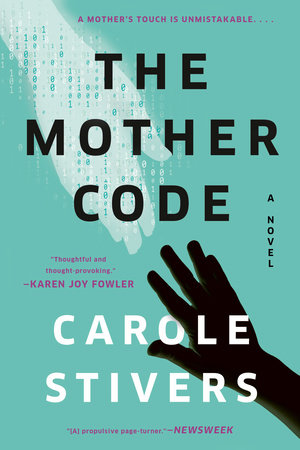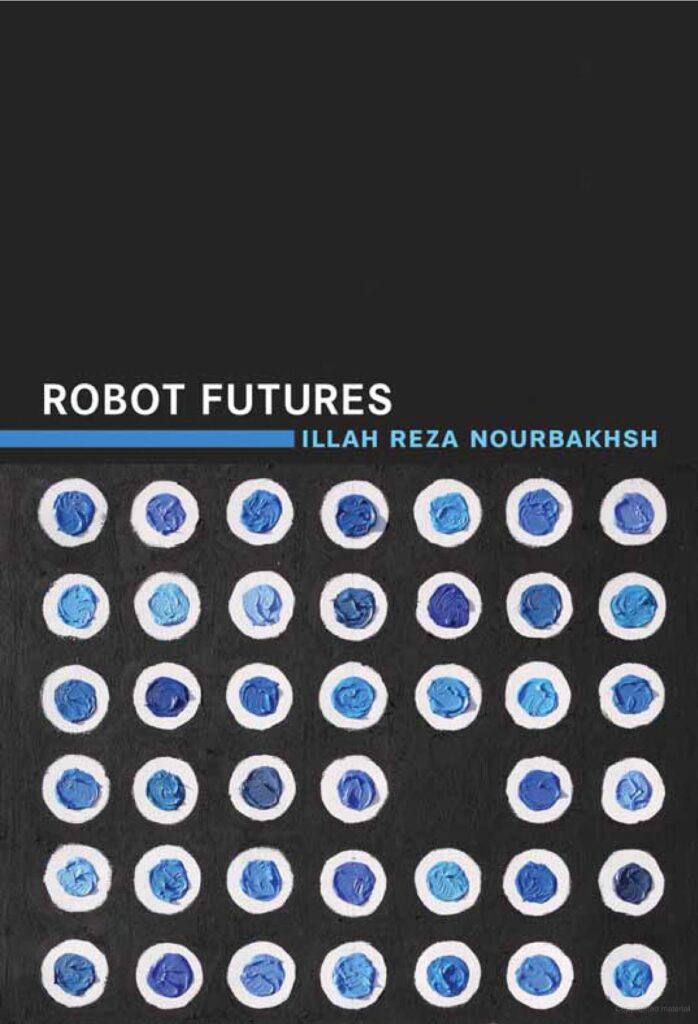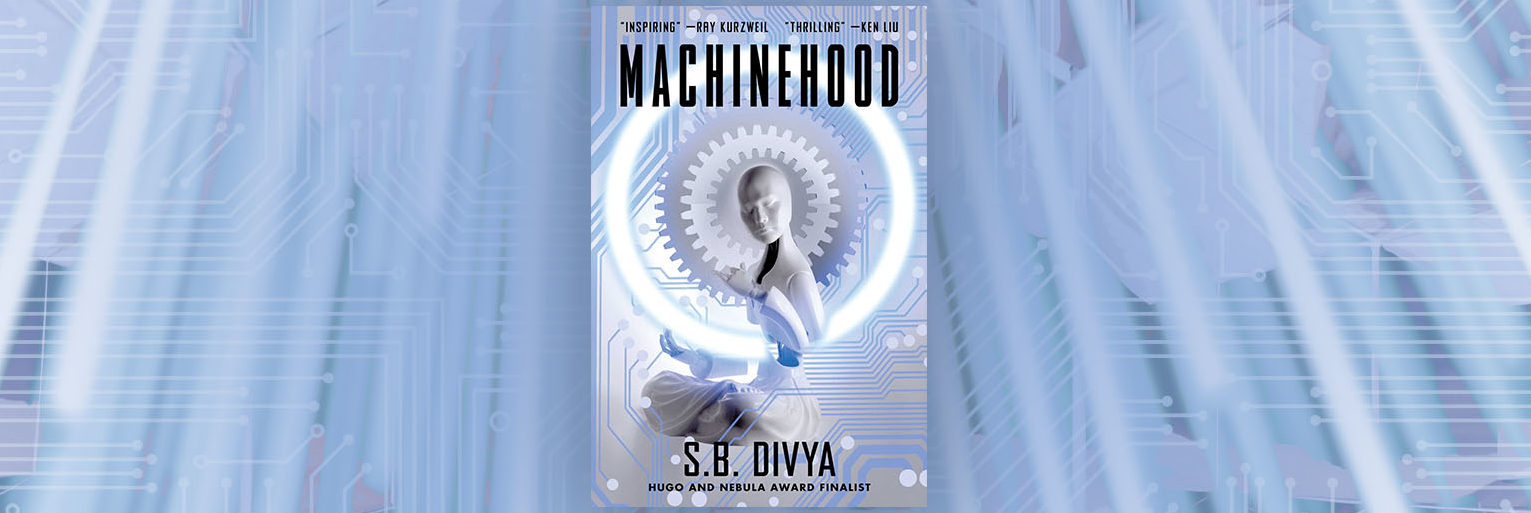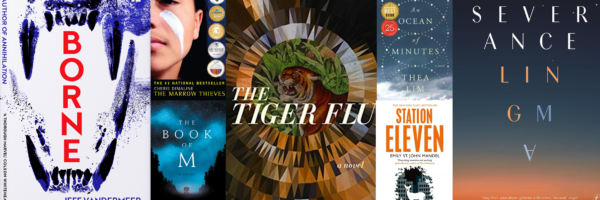An interesting subset of science and speculative fiction is the body of writing by figures who have had previous careers, in one way or another, as scientists. There is a considerable tradition here: H.G. Wells was never a scientist as such but his first published work in 1893 was a two-volume textbook on Biology that came from his time as a student and teacher; while Isaac Asimov held a PhD in Chemistry and became a Professor in the subject on the Faculty of Boston University as he developed his early fiction.
Contemporary writers tend to have backgrounds in the kinds of digital technologies that prove to be such dependable backdrops to many recent imaginations of the future. Carole Stivers, author of the 2020 novel The Mother Code, has a PhD in Biochemistry and subsequently developed a career in medical diagnostics, with the result that The Mother Code’s focus on ectogenesis and ideas of the maternal are underpinned by ideas of life systems that come from Stivers’ medical background. Self-styled technologist and author Ramez Naam, who wrote the Nexus trilogy (2012-2015), worked for Microsoft for over a decade as part of the teams that developed Outlook, Internet Explorer and Bing. Naam, whose fiction places future explorations of cognitive enhancement squarely at the centre of his fast-paced post-cyberpunk thrillers, is also the author of a semi-scholarly study, More than Human: Embracing the Promise of Biological Enhancement, that, as its title suggests, celebrates the transhumanist possibilities of future technologies.
S.B. Divya’s 2021 novel Machinehood is another fiction in this vein. With a background in computational neuroscience and signal processing, Divya worked as electrical engineer for 20 years before becoming a writer, and more than any of the above examples, her novel is shot through with highly complex ideas taken from her previous career. Set in a late twenty-first century world in which global society is under attack from a shadowy group demanding rights for A.I.s and robots, Machinehood deals with a myriad of technologies: augmented communication, pharmacological change, biogenetics, service robots and personal A.I. support assistants, total surveillance systems and social media saturation, off-world societies, and the complete collapse of the world’s internet and satellite connections. It also ruminates on global geopolitical tensions, terrorism, (neo)Buddhism, legal regulation, trans identities, and the contemporary gig labour economy, and includes a surprising abortion narrative and disability storyline that arises when the body augmentation of one of the central characters goes awry due to genetic complications.
Machinehood is a novel in which many of the current possibilities about imagined technologies have become fact. Various drugs – zips, flows – allow for enhanced strength or improved cognitive processing. Communication can be as intimate as one-to-one sub-vocalisation or public through huge social internet feeds. Nearly everyone can see nearly everything and so the characters act in a performative world where events – including violence and sex – are available to watch and recommend, through a series of ‘tips’ (they go into a virtual jar), that are an upgrade on social media likes and now a way of sourcing income. The technology is dizzying: swarms of cameras follow all the characters, whether to enable social media profiles or enact government and third party surveillance, in ways reminiscent of roboticist Illah Reza Nourbakhsh’s detailed imagining of a real late twenty-first century in his book Robot Futures; domestic kitchens have expanded from the production of food to become regimes that can sequence and make pharmaceuticals with ease; and individuals can send just about any information to one another, from individual documents to full genomes, just by talking and in seconds.
Physical disability is largely repairable as bodies injured in conflict can be fixed, but genetic abnormalities are more complicated. ‘I can handle living with a disability’, one of the novel’s two central characters asserts when forced to face the reality of her condition, also noting that ‘her fans would appreciate the drama of watching her struggle’. In the end it doesn’t come to this, of course, and she is saved by a complex off-world technology developed through Buddhist principles (it’s that kind of book). But the use of disability as a seemingly peripheral, but actually vital, structural underpinning of the overall storyline – a classic narrative trope – is clear.
Machinehood unravels at the end, as do so many fictions that engage with posthumanist plate-spinning but cannot bring together their multiplicities into a coherent conclusion. Technology in the novel is so excessive that, when it comes time to bring the characters to an end point, the writing can’t handle how the science might be part of their trajectories. Despite what seems like progressive possibilities of human-machine interaction, the multiple systems on show are unable to contribute to an ending where a set of recognisable humanist categories – family, relationship, re-affirmed individual identity and personal quest, but also collective human hope – round off the action.
Asimov’s gravitation from science to fiction created a space for him to explore questions of rational selfhood through his robots stories. For Naam, the excitement of the contemporary technology he helped create lies in the possibilities for human enhancement explored in his novels. Divya’s own transition, as evidenced in Machinehood, sees her fashion a thick fabric of technology in which her characters are surrounded. Ultimately however, that surrounding gives way. The final image of the novel is a view of Earth from space, where ‘the land had no divisions’. A full planetary consciousness – ‘a better future’ – is both desirable and possible if people ‘work as one’. Optimism wins the day. It’s intriguing to wonder if scientists and technologists who turn their back on their professions to write do so because they feel fiction provides the shape to best express such a future, but also whether a technosolutionism nevertheless lingers from their previous work. Whatever way this plays out, in the ending of a novel like Machinehood it seems that there is an inherent problem in recognising that their new medium might be as suggestively complex as the research they left behind.
Related Reading










